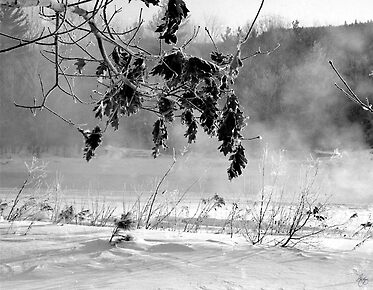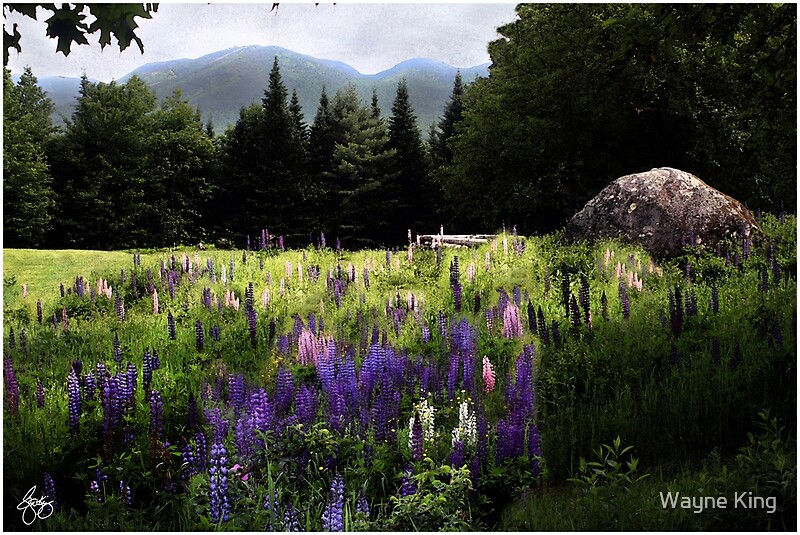A Legacy of Environmental Stewardship
A Conversation with Dr. Larry Spencer
Listen:
Professor Emeritus of Biology, Plymouth State University
BS, Brigham Young University; MA, Oregon State University; PhD, Colorado State University
It was a bit of serendipity that brought Dr. Larry Spencer and his wife Eleanor to New Hampshire in the late 60's. What he expected to be a brief detour to New Hampshire from his home stomping grounds in the West, turned out to be a love story that blossomed into an environmental legacy here in the Granite State over the course of a lifetime.
From his earliest days charting his early morning walks to class by the rank smells emitted by the Pemigewasset River to its rebirth as a protected river under the NH River's Protection and Management act Larry has employed science and activism throughout his life to create an environmental legacy - not only for himself but for Plymouth State University.
His latest project, the Pemigewasset Riverside Park and Gyro Bike park is a collaboration between both private individuals, Plymouth State University and the communities of Holderness, Plymouth and Ashland as well as several local clubs. Led by Spencer and Dr. Lisa Doner, as well as the Conservation Commissions from the collaborating towns this conservation effort provides a wide range of recreational opportunities from hiking, swimming at "Secret Beach" to birding, snowmobiling and mountain biking.
Both Dr. Spencer and Dr. Donor have for years been running cleanup trips along both the Pemigewasset and Baker Rivers as well as providing volunteer time and brainpower to the task of helping to create a sustainable future for these two beautiful rivers.
I caught up with Larry Spencer recently and spoke with him about his legacy and finding time in his busy retirement.
Notes and links:
Homepage: http://oz.plymouth.edu/~lts/
About Professor Spencer
Dr. Spencer started his collegiate education at the University of Hawaii-Manoa, but after a year transferred to Brigham Young University where he received his B.S. in Zoology with a minor in geology. From there he moved to Oregon State University where he received an MA in Zoology with a minor in oceanography. His research was a morphological study of mid-water squid in the Family Gonatidae. To complete his educational transcript, he moved to Fort Collins, where he earned a PhD in Zoology with a minor in geology. His research dealt with the distribution and population biology of Gammarus lacustris, an amphipod of high elevation lakes. During his time at Plymouth he completed sabbatical leaves at U.C. Berkeley, Hawaii Institute of Marine Biology, People’s Republic of China (Suzhou), Institute for Artic and Alpine Research (University of Colorado-Boulder), and Lincoln University (Lincoln, New Zealand). As a fourth generation Californian, he always wanted to graduate from Berkeley, so while associated with the Zoology Department, he completed a Masters in Library Science. His work in Hawaii dealt with the population biology of a coral reef anemone, Antheopsis papillosa. He found that tropical waters can be very cold when snorkeling for a couple of hours without a wet suit. During the year he spent in the PRC, he learned enough Mandarin for two tours of eastern China and also examined the teaching of biology and how the PRC handled environmental issues. While at INSTAR he taught myself GIS and remote sensing and did a demographic study of Ponderosa Pine in Gregory Canyon. In New Zealand, he was associated with the Department of Ecology and worked on a couple of book chapters and examined the forested landscape of the both the South and North Islands.

Blue Hellebore Dreams
Selected publications/presentations/exhibitions
Since full-time retirement in the Spring of 2003, I’ve completed more than 50 book-reviews for Choice, a journal published by the American Library Association.
For the past two springs, I’ve given a workshop at the NE Natural History Conference on the applications of GIS in the environmental sciences and will be doing a similar workshop on remote sensing for the spring 2017 conference in Burlington, VT.
Spring 2017—NH Watershed Conference—Poster on “An analysis of the role that Mt. Prospect plays in the Pemigewasset Watershed, NH”
Fall 2016–New England Estuarine Research Society meeting–Oral presentation-“Lessons from the Past: What the US Exploring Expedition (1838-1842) tells us about how or how not to do science.”-
Spring 2016-NH Watershed Conference—Oral presentation on “Livermore Falls; cooperative efforts bring great results”
Spring 2015—Center for the Environment Colloquia series—Oral presentation on recent books in the environmental sciences.
Courses Taught in Retirement
Biology Seminar – BI 4960 (Spring semester) –participant
Research
There has been no focus to my research at Plymouth as I’ve been able to explore many aspects of the biological sciences, including its history. I’ve studied Green Shore Crabs at Odiorne Point, NH and spent a month at a marine station in Bangor, North Wales doing some physiological work on the same species. As noted above, in 1981-82 I did work on coral reef organisms at the Hawaii Institute for Marine Biology, Kaneohe, Oahu and returned to the same location the summers of 90, 92, 94 and 96 for additional work. I spent the academic year of 1997-98 in Boulder and in addition to the demographic study of Ponderosa Pine in Gregory canyon, spent some time revisiting collecting sites in Rocky Mountain National Park, collecting aquatic invertebrates. I was the co-founder of the Division of the History and Philosophy of Biology of the American Society of Zoologist. The integrative nature of the division later was one of the elements to give rise to a name change of the society to the Society for Integrative Biology. I organized for the ASZ two sessions at the annual meeting for the division. One resulted in a research topic on John Muir as a glacial geologist (yet to be published). Another resulted in a paper on J. Roger Bray a student of the plant ecologist, John Curtis at the University of Wisconsin (Written, but never published).
Professional Roles
I served one term as President of the New England chapter of the National Association of Geology Teachers. I serve as the Vice Chair of the NH Rivers Management Advisory Committee, representing the NH Association of Conservation Commissions. I have served as chair of the Holderness Conservation Commission since the late 70s and for the last two years have served as chair of the Holderness Energy Committee. I am chair of the Environmental Subcommittee of the Friends of the Pemi-Livermore Chapter. In my spare time, I serve as Treasurer of the Plymouth Congregational-UCC church and as Treasurer of the United Campus Ministry Program at Plymouth State University.
Holderness NH Conservation Commission
https://holdernessconservationcommission.org/
New England Mountain Bike Association
https://www.nemba.org/trails/new-hampshire/pemigewasset-valley-trails-plymouth
https://www.nemba.org/trails/new-hampshire/gyroscope-bike-trails-plymouth
Gyroscope Bike Trails, Plymouth
download trail map
driving directions
19 Prince Haven Rd
Plymouth New Hampshire 03264
Description
The Trails: The Pemigewasset Riverside Park, on the Holderness side of the river, has long been known to mountain bikers as the “Gyroscope Trails”, or “Gyro”. This trail network is unique in New Hampshire for its absence of rocks – making it a true beginner network. The winding and twisted single track is a great place to develop your turning skills.
Jump Area: The jump area contains advanced and expert features. Please use caution.
Getting There: Please park at Fox Park or the Plymouth Pump Track and ride across the river to get to Gyro. Railroad Square and Green Street provide a safe, low-traffic route around Main Street, for bikers to get from the Pump Track to the bridge.
Description
Welcome to Plymouth – the gateway to the outdoor recreation in the western White Mountains of New Hampshire and the Lakes Region, you are a short trip away from world class hiking, skiing, biking, climbing and water sports.
Pemi Valley NEMBA has partnered with the Town of Plymouth, the Holderness Conservation Commission and the Oxbow Initiative to create great mountain biking opportunities with riding distance of downtown. For a more detailed map go to the Fox Park and Gyroscope Trail links on the Pemi Valley NEMBA Page.
Fox Park
The Trails: Fox Park’s singletrack trails are designed with intermediate riders in mind. These trails feature a great mix of flow and technical riding. You will encounter roots, rocks and steep terrain on these trails. For walkers, the doubletrack trails are most suitable.
Parking: the town of Plymouth has a large parking lot on Prince Haven Drive, off of Langdon Street. There is an informational kiosk and port-a-potty.
Gyroscope Trails
The Trails: The Pemigewasset Riverside Park, on the Holderness side of the river, has long been known to mountain bikers as the “Gyroscope Trails”, or “Gyro”. The trail network is unique in New Hampshire for its absence of rocks – making it a true beginner network. The winding and twisted single track is a great place to develop your turning skills.
Jump Area: The jump area contains advanced and expert features. Please use caution.
Getting There: Please park at Fox Park or the Plymouth Pump Track and ride across the river to get to Gyro. Railroad Square and Green Street provide a safe, low-traffic around Main Street, for bikers to get from the Pump Track to the bridge.
Pump Track
The Track: The pump track is a great place for beginners to develop their skills. There is a starting ramp and a figure-eight track of rollers and berms that winds its way through the old concrete supports, which also serve as a public graffiti canvas.
Thunder Over the Mountains
In the waning days of 2009 New England's largest utility company, a company used to getting its way through political power, generous distribution of money, and a huge helping of sheer hubris, teamed up with Canada's Crown corporation Hydro-Quebec.
They began to meet in secrecy, carefully expanding their circle to prevent alerting the public. They began quietly buying up development rights and land along the border between New Hampshire and Quebec, lining up political support with healthy campaign contributions and lofty promises.
Their plan: to drive a stake through the heart of New Hampshire's Northcountry and the White Mountains in the form of a massive powerline. 135-foot towers, running some 150 miles through the most beautiful and cherished landscape in the Northeast, or anywhere in North America for that matter.
In retrospect, had they been able to secure the rights to those first few miles on either side of the boundary in secret, they might have been unstoppable.
But, like every step of the way in what would become the David and Goliath story of the young century in New Hampshire, a handful of dedicated citizens would sound the alarm and from these quiet rolling hills and granite mountains would descend an army of farmers, tradesmen and woman, housewives and househusbands, poets, writers, artists; businessmen and women, doctors, lawyers and, yes, indian chiefs, ready to fight for the land they loved.
It began over a Thanksgiving dinner with one family - who’s heritage and ties stretched across the international boundary - and a whispered warning. Canada’s massive Crown Corporation HydroQuebec was buying up land and with EverSource New Hampshire, they planned to run a powerline to the Boston metro area.
That hushed conversation was the spark that would soon become a brushfire, igniting an epic ten year battle for the soul of New Hampshire.
“Thunder Over the Mountains” is the story of the epic battle against the Northern Pass Powerline. The story of how good, decent, folks set aside all the differences that had been plaguing our country for a common cause that united them; How love-of-place and landscape triumphed over money, power, greed and arrogance.
“Thunder Over the Mountains” coming in September, from Moosewood Productions, wherever you listen to your favorite podcasts. Discover how you can help here.




















